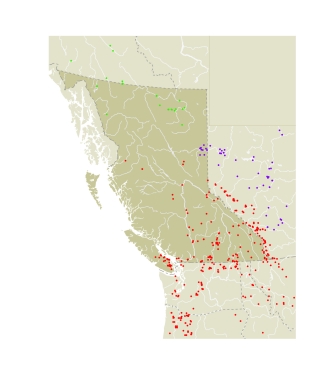AdultThe Arctic Skipper is easy to identify by the tan and black checkered wing pattern.
Immature StagesFletcher (1889b) reared the species to mature larvae. The eggs were pale green and round. The mature larvae were 1.12 inches (2.8 cm) in length. The colour was pale green, with white lateral stripes on the abdomen. The prothorax is not heavily sclerotized as in some other skipper larvae.
SubspeciesPrevious authorities have treated BC populations as part of the widely distributed North American subspecies C.p. mandan (W.H. Edwards, 1863) (TL: Pine Ridge, MB). The only BC populations that appear to be of this subspecies are those in the Peace River canyon. Other northern populations have a darker ground colour on the ventral hindwing and are subspecies C.m. skada (W.H. Edwards, 1870) (TL: Kodiak, AK). This subspecies is found in Alaska, the Yukon, and northern BC. Mattoon and Tilden (1998) incorrectly apply this name to the rest of BC and south to Colorado. The central and southern BC populations are larger, with relatively larger tan spots in the checkered pattern. The first two spots of the submarginal row of spots are also elongated, a character that separates them from all other subspecies. The newly described subspecies C.m. magnus Mattoon & Tilden, 1998 is the correct name for the subspecies from northern California north to central BC, and the subspecies is not restricted to northern California as the authors thought (Mattoon and Tilden 1998).
